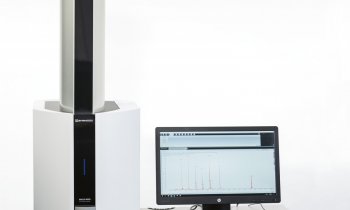Use of Less Invasive, Imaging-Guided Biopsies on the Rise
Biopsy developed into an invaluable diagnostic tool in many organ systems. Advanced imaging technologies have helped shift biopsy techniques away from more invasive approaches toward imaging-guided percutaneous or through the skin techniques, according to a new study appearing online and in the September print edition of the journal Radiology.
The development of computed tomography (CT), ultrasound and magnetic resonance imaging (MRI), allowed physicians to use advanced imaging guidance with biopsies. Imaging-guided percutaneous needle biopsies achieve greater precision in targeting lesions, resulting in high sensitivities and low complication rates.
For the study, researchers looked for biopsy trends in Medicare claims data from 1997 through 2008 for 10 anatomical regions. Biopsy procedures increased from 1,380 per 100,000 Medicare enrollees in 1997 to 1,945 biopsies in 2008, representing a compound annual growth rate of 3 percent. In 2008, 67 percent of all biopsies were performed percutaneously, compared to 59 percent in 1997.
"We also found that the use of imaging guidance increased over this time period, most likely because the technique enables more efficient and safe targeting of lesions," said the study’s lead author Sharon W. Kwan, M.D., radiology resident at the University of California in San Francisco.
The increased percentage of imaging-guided percutaneous biopsies corresponded to decreases in the percentages of the more invasive open biopsies and non-imaging-guided percutaneous biopsies.
The only two anatomical regions for which percutaneous needle biopsies did not represent the majority were superficial lymph nodes and musculoskeletal soft tissues. Open biopsies are more feasible for these superficial regions, and the areas of concern are more likely to be palpable and less in need of imaging guidance.
Performance of biopsies by radiologists increased from 35 percent to 56 percent during the study period. However, the annual rate of growth in biopsies performed by radiologists slowed from 8 percent in the first half of the study period to 6 percent in the second half. Dr. Kwan suggested that one contributing factor was the increasing number of imaging-guided biopsies performed by physicians of other specialties.
"There is no reason to think that one physician specialty, as a whole, is better than another at performing biopsies," Dr. Kwan said. "However, in the case of imaging-guided biopsies, radiologists, who are specifically trained in the use and interpretation of imaging, should be the most qualified to perform these procedures."
Despite rapid increases in imaging utilization in the last decade, the growth in overall biopsy utilization was a modest 3 percent. Dr. Kwan noted that the finding could assuage fears over increased imaging utilization leading to additional costly workups, including biopsies.
"Effect of Advanced Imaging Technology on How Biopsies Are Done and Who Does Them." Collaborating with Dr. Kwan were Mythreyi Bhargavan, Ph.D., Robert K. Kerlan Jr., M.D., and Jonathan H. Sunshine, Ph.D.
Radiology is edited by Herbert Y. Kressel, M.D., Harvard Medical School, Boston, Mass., and owned and published by the Radiological Society of North America, Inc.
03.08.2010











